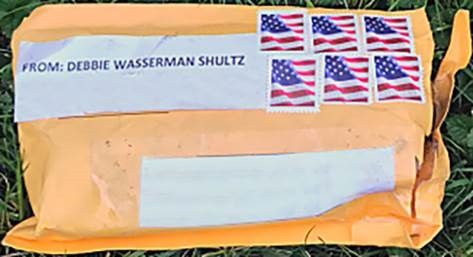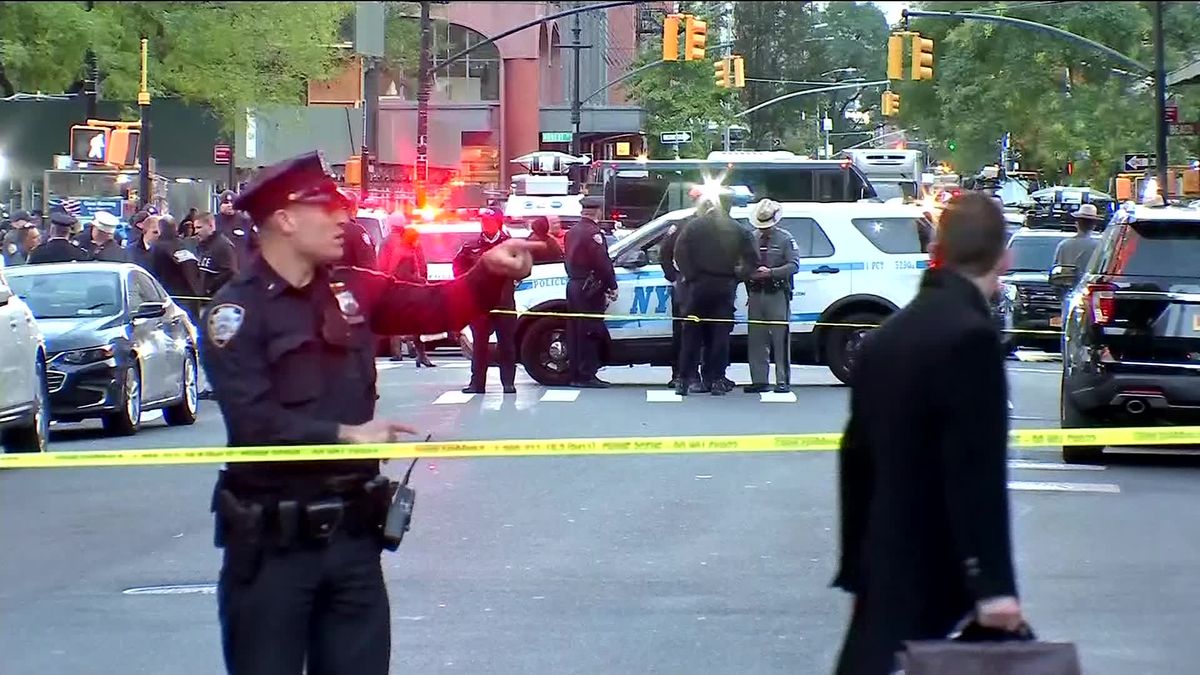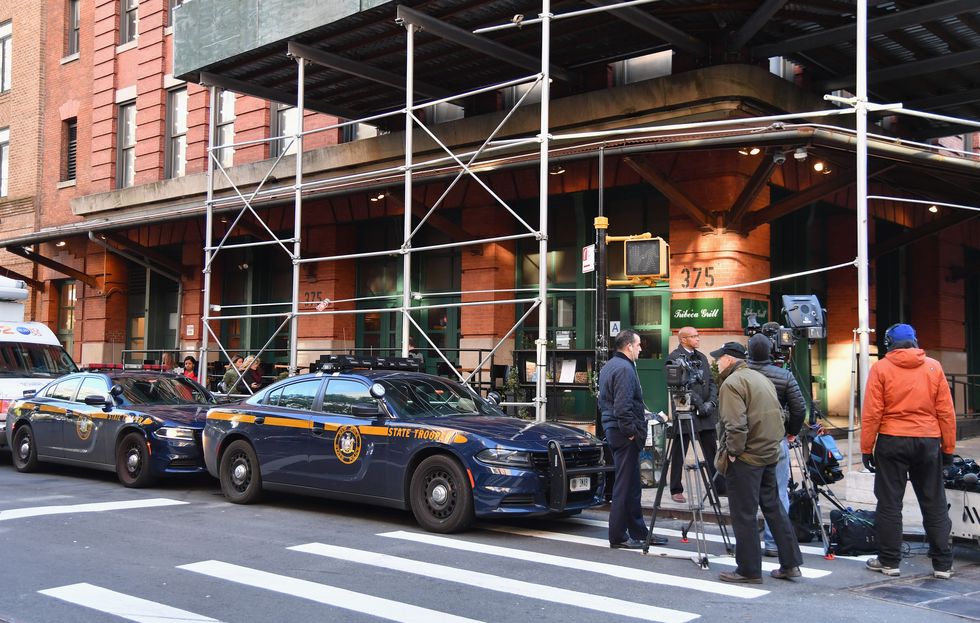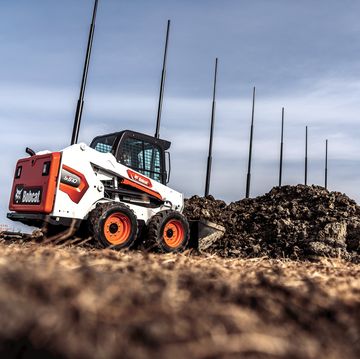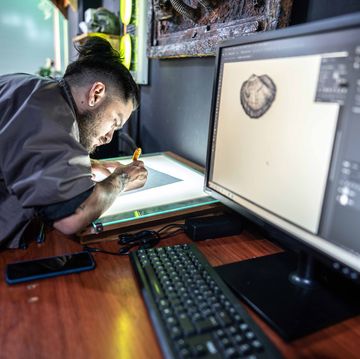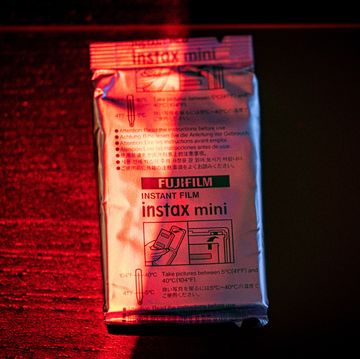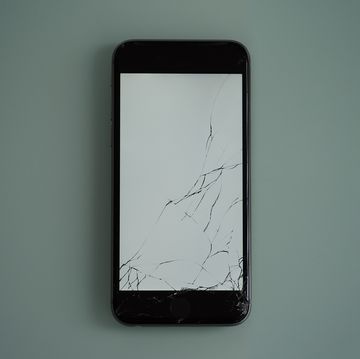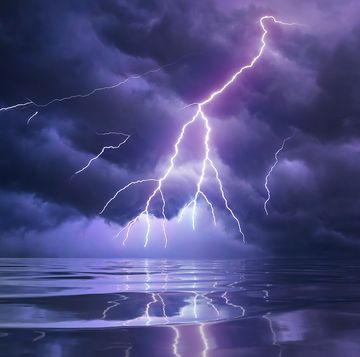Over the last few days, several prominent figures have received pipe bombs from an unknown terrorist, apparently with a political motivation—all the targets are vocal critics of President Trump. Devices have been delivered through the mail and by courier to locations around the country.
In the wake of these troubling attacks, you may be wondering how the authorities determine that a package is "suspicious" and what happens after they carry the object away. Here's what you need to know.
How did people know the packages were suspicious?
The first package found was at the home of billionaire philanthropist George Soros. One of his employees opened it and discovered a length of pipe with a clock attached to it and conspicuously protruding wires. Definitely suspicious. The employee alerted local police.(You can see a picture of the device sent to CNN on Jim Acosta’s Twitter feed.)
The next devices found were sent to the homes of Barack Obama and Bill and Hillary Clinton, all of whom still have their mail screened by the Secret Service. The Secret Service is pretty good at spotting suspicious things. After that, authorities were on the lookout for similar packages, in manila envelopes with printed addresses and about a half dozen American flag stamps.
What is a pipe bomb, anyway?
A pipe bomb is an explosive that uses the pressure of a strong container—in this case, a pipe—to amplify the power of explosive materials within. In other words: Because the pipe keeps an explosion contained until it reaches a much greater pressure than it would in open air, a simple pipe filled with gunpowder or even matchstick heads can create a devastating explosion. Pipe bombs are the most common type of improvised explosive device found in the U.S.
What can we tell from the bomb that we’ve seen?
According to reporting on the bomb from The New York Times, the pipe bomb may actually not be capable of functioning as intended, if at all. The end caps appear to be taped in place, which would not provide the seal needed to build up the pressure that can make pipe bombs so deadly. Additionally, the pipe bombs have those conspicuous clocks attached—something that usually only shows up in movies. In real life, bombers don’t give their victims a countdown.
Once the bombs were found and removed, where were they sent?
The bomb sent to CNN’s office was removed by the NYPD using a total containment vessel (TCV), a giant sphere made of lead and steel that’s pulled by an NYPD truck. A TCV can contain a blast with the power of up to 25 pounds of TNT. In this case, the bomb was driven to a facility in the Bronx for further investigation. The rest of the bombs seem to be destined for an FBI lab in Quantico, Virginia, where they’ll be tested and examined for clues that can help law enforcement figure out who sent them.
So what exactly happens there?
For the full story, you can check out PM’s full coverage of the FBI’s Terrorist Explosive Device Analytical Center. But here’s an excerpt: Examiners can find prints using shortwave ultraviolet light, fluorescent dyes, and a ridiculous tool that vaporizes superglue. The chemicals used in a bomb are analyzed with gas chromatographs and mass spectrometers. And physical markings can be studied to deduce the specific tools used to build the bomb, which can narrow the search for where and how it was made.
Who is leading the investigation now?
An FBI-led Joint Terrorism Task Force (JTTF) comprised of members from the FBI, local police departments, and additional government agencies are working on the case. A JTTF allows for the best of all available resources: The NYPD is combing through their 15,000 security cameras and complement of license plate scanners for suspects. Plus there’s the lab at Quantico. And then there’s the U.S. Postal Inspection Service.
Wait, the U.S. Postal Inspection Service?
Founded by Ben Franklin (yes, seriously) in 1775, the U.S. Postal Inspection Service is a federal law-enforcement agency within the U.S. Postal Service designed to “[regulate] the several Post Offices and [bring] the Officers to account.” In the 1800s, they were called special agents, and their duties included reporting on mail thefts as well as describing the condition of the horses, railroads, and steamboats that carried mail around the country. Today, the agency employs 2,442 people across 17 divisions in major American cities, plus a forensic laboratory in Dulles, Washington. They investigate crimes that include child exploitation, the mailing of controlled substances, extortion, identity fraud, money laundering, and people sending bombs to political targets.
What can the U.S. Postal Inspection Service find out about suspicious mail?
That forensic lab in Dulles is divided into four units that each perform particular tests. The Questioned Documents Unit can do paper and ink analysis, as well as handwriting and type comparisons. The Fingerprint Unit is pretty self-explanatory, and the Digital Evidence Unit collects and examines computer hard drives, phones, and other electronic devices. The Physical Sciences Unit, which is likely to be involved in analyzing these bombs, can conduct physical and chemical tests on bomb debris, toolmarks on handmade bombs, and traces of adhesives, fibers, hair, paint, paper, plastic, rubber, and insulation. They can also find drugs, so stop mailing those.
Cool. So they’re like the Post Office FBI. But are they real cops?
Yes. U.S. Postal Inspection officers carry guns and are authorized to make arrests, execute search warrants, and serve subpoenas. In fact, in the 1920s, post office inspectors were the first officers in federal law enforcement to carry Tommy guns, so that they could foil robberies on mail trains.
Whoa.
I know! They should do CSI: Mail. We’d watch.
Have the authorities made any progress?
The U.S. Postal Service also takes images of mail that comes into the system. Analyses so far seem to indicate that the packages may have come from South Florida.
Are there more bombs out there?
It’s possible—the FBI has said more packages may be currently traversing the mail system. We’ll update this story as more details emerge.
Kevin is a writer and editor living in Brooklyn. In past lives he’s been an economist, computer salesman, mathematician, barista, and college football equipment manager.
